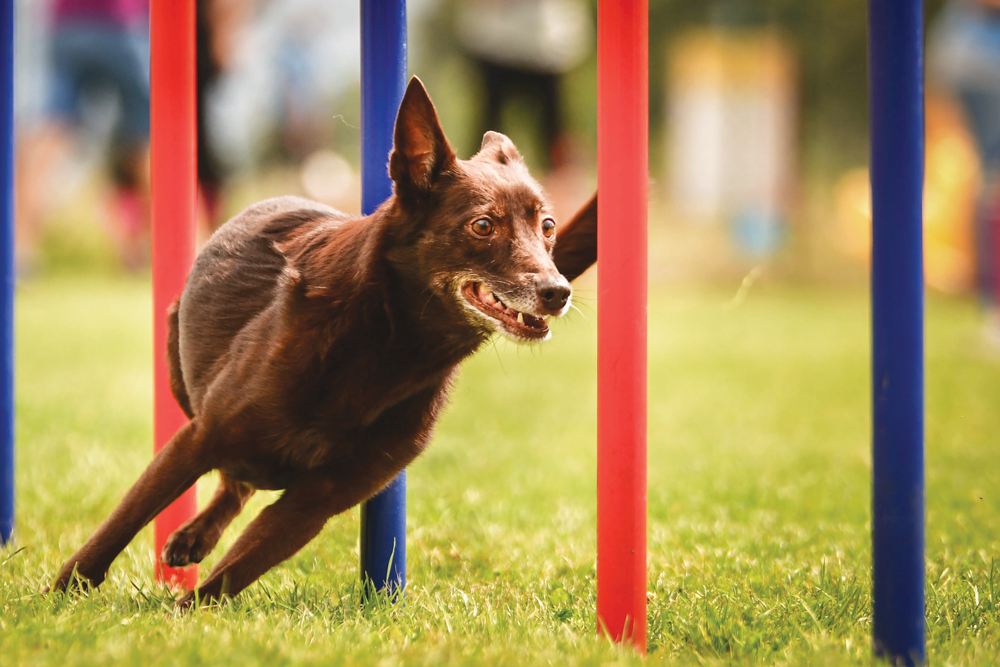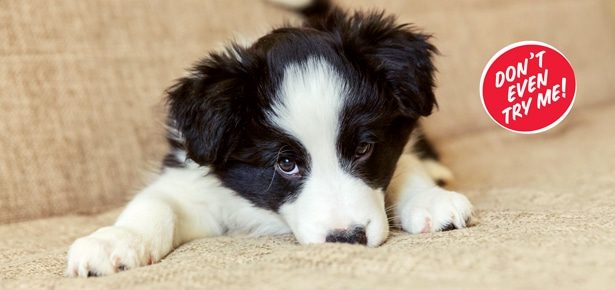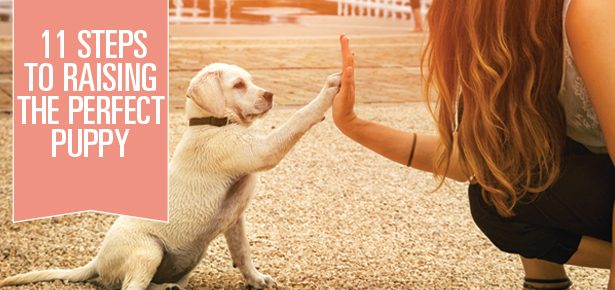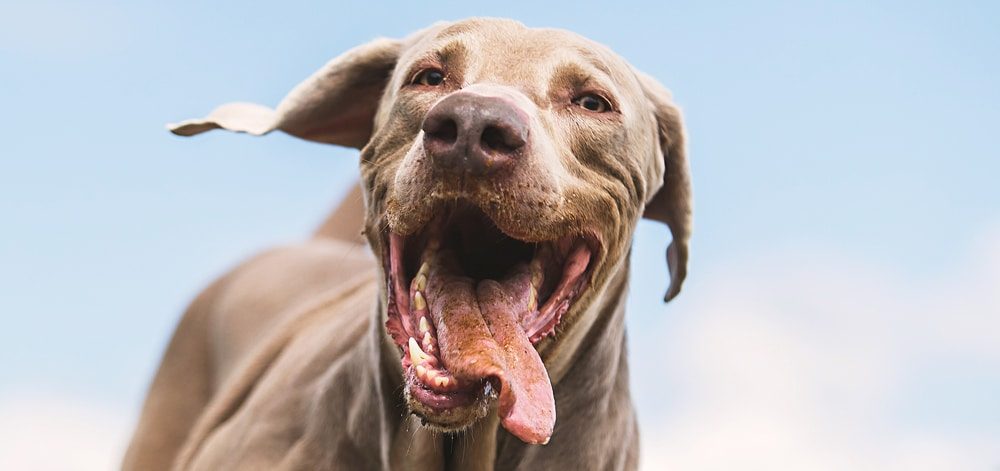
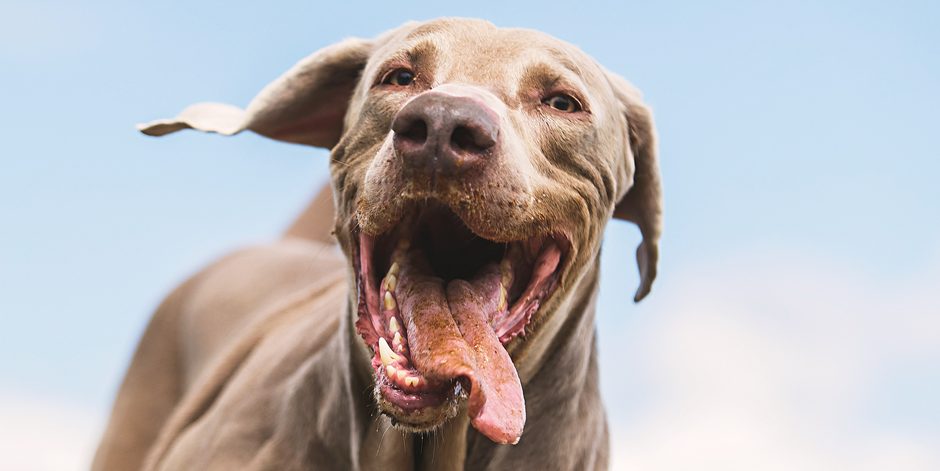
Dogs with Excess Energy
Is it bad behaviour? Or unexpressed energy? Help for energetic dogs
 We all want our dogs to be happy, healthy, and enthusiastic about life. But what happens when your dog has too much energy? Just ask Felicia, owner of a six month old Goldendoodle named Barnaby. “Barnaby races around the house like a maniac, grabs things he shouldn’t have, and constantly pesters my older dog and us for attention,” an exasperated Felicia says. She wishes Barnaby had come with an “off” switch! But short of that, there are still things she—and you—can do to help a very active dog express energy in productive ways.
We all want our dogs to be happy, healthy, and enthusiastic about life. But what happens when your dog has too much energy? Just ask Felicia, owner of a six month old Goldendoodle named Barnaby. “Barnaby races around the house like a maniac, grabs things he shouldn’t have, and constantly pesters my older dog and us for attention,” an exasperated Felicia says. She wishes Barnaby had come with an “off” switch! But short of that, there are still things she—and you—can do to help a very active dog express energy in productive ways.
First and foremost is exercise. Sure, we all know dogs need it. But many owners don’t realize just how much exercise their dog needs. Requirements vary with age, breed, and physical condition. But in general, if you have a healthy, adolescent, active breed, two ten-minute potty walks are not sufficient. Two thirty-minute walks is a much better start, and even that might not be enough.
Walks are good, but hikes are even better. Not only is the terrain more challenging, but hikes can be very stimulating mentally, given all the scents along the way. Investigating bushes, peering under rocks, sniffing where other dogs have been, and air-scenting in a natural setting can be much more stimulating than walking down a suburban street.
Running and playing expends even more energy. Chasing a ball or romping at a local park is a start. If you have a dog who would benefit from long jogs, using a bicycle attachment can give you both a way to get moving. Playing with other dogs can be even more tiring; think play dates with familiar dogs rather than public dog parks where aggressive dogs can be found. Or, if you have a local doggie daycare, let your dog attend a few days per week.
Image: photoboyko/bigstock.com
Image: dodofoto/bigstock.com
Dog sports are another great energy-burning outlet. Depending on your dog’s physical condition, agility might be a great fit. The jumps, tunnels, and other obstacles provide physical exercise and mental stimulation. Other physically demanding dog sports involve flyball, dock jumping, mushing (urban or on snow), disc dog, and lure coursing. Less intense sports include herding, rally obedience, and canine freestyle. And for more mental stimulation with less physical exertion, there’s k9 nosework and tracking. Any of these sports will engage your dog physically and mentally and will go a long way toward tiring him out.
If vigorous exercise isn’t calming your dog, take a look at the type of activity in which your dog is engaging. Norwegian behaviourist Turid Rugaas feels that intense, repetitive exercise such as ball chasing can actually be detrimental to dogs and can contribute to chronic stress. This conclusion is based on physiological reactions to high energy endeavors. Levels of adrenalin and other stress chemicals may stay elevated for days following bouts of intense exercise, and long-term activation of the stress-response system can be detrimental. If you find that your super-active dog is turning into a better athlete but not calming, try changing the type of exercise you’re providing.
“If vigorous exercise isn’t calming your dog, take a look at the type of activity in which your dog is engaging. Norwegian behaviourist Turid Rugaas feels that intense, repetitive exercise such as ball chasing can actually be detrimental to dogs and can contribute to chronic stress.”
Mental stimulation is also crucial. An easy way to provide it is to feed your dog’s meal from a treat dispenser. A wide variety exists, from simple ball-type dispensers to ones like the Kong Wobbler that dogs bat around to get treats. Rotate feeders to keep the novelty factor.
Recreational chewing also expends energy. Stay away from rawhide and pig ears, as they can be dangerous. Bully sticks are natural and can last a while but be sure your dog doesn’t swallow the last bit. I love giving my dogs stuffed Kongs. Just plug the smaller of the two holes with a soft, chewy treat, then flip over and stuff through the larger hole! Make layers. For example, alternate kibble with thin layers of paté-consistency canned food, a cookie here and there, and end with canned food on top to keep it all in place. Kong-stuffing recipes can be found online. Once your dog is good at excavating, you can even freeze the Kong to make it more challenging.
Another form of mental stimulation is puzzle solving. The dog puzzles by Nina Ottosson, for example, feature hidden compartments where treats are stuffed. Your dog has to nudge, paw, slide, or otherwise figure out how to reach the treats. Puzzles range from easy to solve to quite difficult. Start off easy and help your dog to work his way up, always supervising.
A last form of mental stimulation that must be mentioned is training. Positive, gentle training for obedience or tricks is wonderful. Some types of training, however, take more focus and mental effort than others. Clicker training in particular requires dogs to figure out what to do in order to get you to click, which is followed by a treat. Clicker-savvy dogs will offer behaviours in hopes of earning a reward.
Lastly, some dogs seem as though they just don’t know how to relax. Here’s an exercise I did with a client’s 10-month-old Lab, Kobe: We tethered the exuberant pup to a piece of furniture and sat nearby. At first he was wild, jumping and barking as usual. But the moment he had four paws on the floor, we uttered a soft verbal “Yes!” (I didn’t want the clicker sound to excite him more). This was followed by tossing a low-value (again, not overly stimulating) treat. Soon Kobe was standing with four paws on the ground looking at us. We waited for him to do something else. He sat. Again, we marked the moment and rewarded with a treat. Eventually Kobe laid down, and we continued as we had been doing. This progressed to Kobe being intermittently rewarded for remaining in a down-stay. His owners were absolutely astonished to see him acting so calmly, and it showed that Kobe could relax. He just needed to learn how.
Join the newsletter and never miss out on dog content again!
"*" indicates required fields
By clicking the arrow, you agree to our web Terms of Use and Privacy & Cookie Policy. Easy unsubscribe links are provided in every email.
